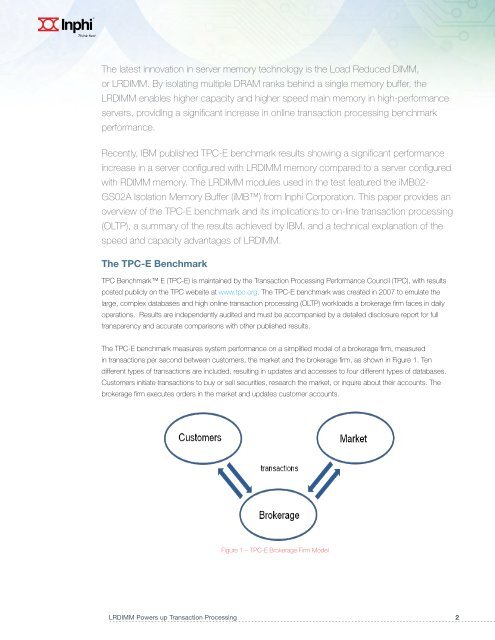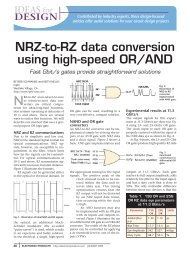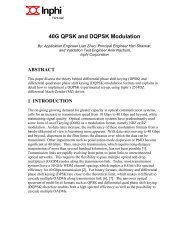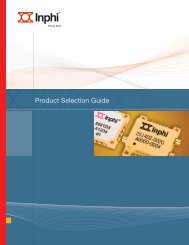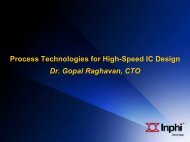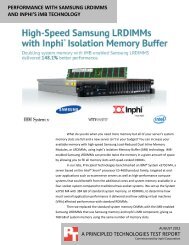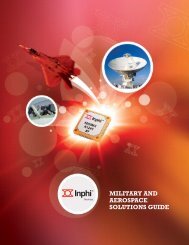LRDIMM - Powers up Transaction Processing - Inphi Corporation
LRDIMM - Powers up Transaction Processing - Inphi Corporation
LRDIMM - Powers up Transaction Processing - Inphi Corporation
- No tags were found...
Create successful ePaper yourself
Turn your PDF publications into a flip-book with our unique Google optimized e-Paper software.
The latest innovation in server memory technology is the Load Reduced DIMM,<br />
or <strong>LRDIMM</strong>. By isolating multiple DRAM ranks behind a single memory buffer, the<br />
<strong>LRDIMM</strong> enables higher capacity and higher speed main memory in high-performance<br />
servers, providing a significant increase in online transaction processing benchmark<br />
performance.<br />
Recently, IBM published TPC-E benchmark results showing a significant performance<br />
increase in a server configured with <strong>LRDIMM</strong> memory compared to a server configured<br />
with RDIMM memory. The <strong>LRDIMM</strong> modules used in the test featured the iMB02-<br />
GS02A Isolation Memory Buffer (iMB) from <strong>Inphi</strong> <strong>Corporation</strong>. This paper provides an<br />
overview of the TPC-E benchmark and its implications to on-line transaction processing<br />
(OLTP), a summary of the results achieved by IBM, and a technical explanation of the<br />
speed and capacity advantages of <strong>LRDIMM</strong>.<br />
The TPC-E Benchmark<br />
TPC Benchmark E (TPC-E) is maintained by the <strong>Transaction</strong> <strong>Processing</strong> Performance Council (TPC), with results<br />
posted publicly on the TPC website at www.tpc.org. The TPC-E benchmark was created in 2007 to emulate the<br />
large, complex databases and high online transaction processing (OLTP) workloads a brokerage firm faces in daily<br />
operations. Results are independently audited and must be accompanied by a detailed disclosure report for full<br />
transparency and accurate comparisons with other published results.<br />
The TPC-E benchmark measures system performance on a simplified model of a brokerage firm, measured<br />
in transactions per second between customers, the market and the brokerage firm, as shown in Figure 1. Ten<br />
different types of transactions are included, resulting in <strong>up</strong>dates and accesses to four different types of databases.<br />
Customers initiate transactions to buy or sell securities, research the market, or inquire about their accounts. The<br />
brokerage firm executes orders in the market and <strong>up</strong>dates customer accounts.<br />
Figure 1 – TPC-E Brokerage Firm Model<br />
<strong>LRDIMM</strong> <strong>Powers</strong> <strong>up</strong> <strong>Transaction</strong> <strong>Processing</strong> 2


